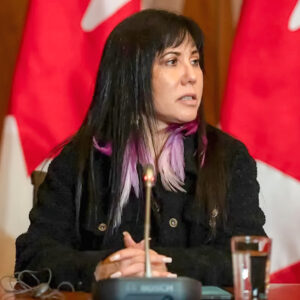
TORONTO — A broken Crown promise to forever protect Aboriginal lands is at the heart of a novel Indigenous claim to the waters of Lake Huron and Georgian Bay, an Ontario court heard Thursday.
The two First Nations groups who make up the Saugeen Ojibway Nation (SON) say their traditional territory includes what is now the Bruce Peninsula and lands south stretching from Goderich, Ont., to Collingwood, Ont. The territory, they assert, includes much of the waters of Georgian Bay and Lake Huron.
“They say they have a relationship with their territory for a thousand years,” SON lawyer Roger Townshend said in opening comments. “The issues before this court are about the relationship — historical and continued —that SON has to these lands and waters.”
The promise SON claims was broken came by way of a treaty in 1836, as European settlers arrived in increasingly large numbers. Under Treaty 45-1/2, SON gave up 600,000 hectares of prime agricultural land south of Owen Sound, Ont.
In return, SON asserts, the Crown promised to protect their interest in the Bruce Peninsula “forever.”
“The promise made and understood was to protect SON’s unique and special interests in its territory,” SON lawyer Cathy Guirguis said. “The king would ensure no one stole the lands in question.”
However, just 18 years later in 1854 under Treaty 72, the Crown demanded surrender of the peninsula, Guirguis told Justice Wendy Matheson in a Toronto courtroom packed with Indigenous spectators and supporters on Thursday.
Indigenous people, she said, had gone from being allies to “obstacles to settlement.”
SON wants the court to recognize Aboriginal title to the offshore waters. It also wants the return of peninsula lands still owned by Canada or Ontario or otherwise not privately owned.
Any compensation will be dealt with at a later phase of the trial.
For their parts, the two governments maintain they have dealt with the First Nations fairly, have lived up to their treaty obligations, and deny Aboriginal title to the lands or waters exist. They want the claims thrown out.
Speaking for the federal government, lawyer Michael Beggs said in his brief opening that the case was not about “what happened 9,000 years ago.”
Nevertheless, he urged the court to keep the historical context firmly in mind. It was, he said, a time in Canada’s history when rapid settlement was taking place and the legal system very different.
Beggs also warned against taking a “simplistic view of the various actors,” saying it would be wrong to assume First Nations didn’t know what was happening or what they were signing. The evidence, he said, will show that the Crown acted with honour, integrity and in good faith.
“It was a difficult set of circumstances that the parties were facing,” he said. “There are no bad guys.”
Similarly, Ontario lawyer David Feliciant said First Nations knew they were giving up the Bruce Peninsula in exchange for the proceeds as the lands were sold. They also knew their rights to hunt and fish would be displaced by the new owners, he said.
“The plaintiffs had reasons to surrender the peninsula,” Feliciant said. “The lands were sold and the communities benefited from the funds. The Crown’s honour was not stained.”
The case, which will likely take years, is already scheduled into the fall, with some of the hearings due to be held on SON territory.
Witnesses will include numerous experts — including in Indigenous culture, anthropology, linguistics and history. Defendants include several municipalities, which see themselves as innocent victims in the dispute.
Chief Lester Anoquot of Saugeen First Nation — one of the two groups that make up SON — said the issues were of profound importance.
“This trial is not only a watershed moment for SON seeking recognition of our rights, but also for Indigenous peoples and Aboriginal rights across Canada,” Anoquot said in a statement. “This is about legally recognizing how integral our waters are to us as Anishinaabe people.”
The trial was adjourned until Monday, when it will resume in Cape Croker, Ont.






